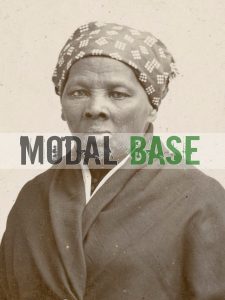Harriet Tubman Biography: Age, Husband, Nationality, Family, And Wikipedia

Harriet Tubman, born Araminta Ross, was a remarkable figure in history who rose from the depths of slavery to become a beacon of hope and freedom. Known for her courage and determination, she led numerous enslaved individuals to liberty through the Underground Railroad. Tubman also played a vital role during the American Civil War as a nurse, scout, and spy. Her unwavering commitment to justice and equality continues to inspire generations. This biography explores her extraordinary life, highlighting her achievements and enduring legacy as a true hero of humanity.
Also Read: Ebube Nwagbo Biography: Age, Parents, Husband, Son, Height, And Wikipedia
Harriet Tubman Biography
Harriet Tubman, born around 1820 in Dorchester County, Maryland, was a trailblazer whose life was defined by courage, resilience, and an unwavering commitment to freedom. Born into slavery, she was originally named Araminta Ross but later adopted her mother’s name, Harriet. Her early years were marked by hardship, including a severe head injury at the age of 12, which caused lifelong health challenges.
Despite being denied formal education, Tubman’s intelligence and resourcefulness shone through. She worked as a field hand, nursemaid, and cook during her time in slavery. In 1849, she escaped to Philadelphia, embarking on a journey that would change her life and the lives of many others. Her escape was just the beginning; Tubman returned to the South multiple times to lead enslaved individuals to freedom through the Underground Railroad. Her bravery and strategic thinking earned her the nickname “Moses,” as she never lost a single passenger on her missions.
During the American Civil War, Tubman expanded her efforts. She served as a nurse, cook, scout, and spy for the Union Army. Her most notable contribution was leading the Combahee River Raid, which freed over 700 enslaved people. This operation made her the first woman to lead an armed military expedition in the United States. Despite her significant contributions, Tubman received little financial compensation for her wartime efforts.
After the war, Tubman continued her activism. She became a prominent advocate for women’s suffrage and worked tirelessly to support freed slaves. She established the Harriet Tubman Home for the Aged in Auburn, New York, providing care for elderly African Americans. Her dedication to justice and equality remained steadfast throughout her life.
Tubman’s achievements were recognized posthumously. She has been honored with memorials, museums, and even plans to feature her on the $20 bill. Her legacy as a symbol of courage, freedom, and equality continues to inspire people worldwide.
Harriet Tubman passed away on March 10, 1913, in Auburn, New York. Her life serves as a testament to the power of determination and the impact one individual can have on the world.
Harriet Tubman Early Life
Harriet Tubman was born around 1820 in Dorchester County, Maryland, into the harsh realities of slavery. Her birth name was Araminta Ross, but she later adopted her mother’s name, Harriet. Tubman’s childhood was marked by immense hardship. She was hired out to work at a young age, performing tasks such as nursemaid, field hand, and cook. Her early years were also shaped by a traumatic head injury caused by an overseer, which resulted in lifelong health issues, including seizures and vivid visions. Despite these challenges, Tubman developed a strong sense of resilience and determination.
Tubman’s family was deeply affected by the institution of slavery. Her parents, Harriet “Rit” Green and Benjamin Ross, were enslaved, and Tubman witnessed the separation of families firsthand. These experiences fueled her desire for freedom and justice. Although she received no formal education, Tubman’s intelligence and resourcefulness were evident in her ability to navigate difficult situations. Her upbringing instilled in her the courage and strength that would later define her extraordinary life. Tubman’s early life laid the foundation for her unwavering commitment to fighting against oppression and advocating for equality.
Harriet Tubman Escape from Slavery
In 1849, Harriet Tubman made the courageous decision to escape slavery. Her journey to freedom was fraught with danger, but her determination to break free from the chains of oppression was unwavering. Tubman fled to Philadelphia, traveling by night and relying on the kindness of strangers and her own resourcefulness. Her escape marked the beginning of her lifelong mission to help others achieve freedom.
Tubman’s decision to escape was driven by her desire to reunite with her family and her refusal to accept the injustices of slavery. She faced numerous challenges along the way, including the constant threat of capture. Despite these obstacles, Tubman successfully reached Philadelphia, where she experienced freedom for the first time. However, her newfound liberty was not enough; Tubman felt a deep sense of responsibility to help others escape the horrors of slavery.
Tubman’s escape was a turning point in her life. It demonstrated her courage, resilience, and commitment to justice. Her journey to freedom inspired her to become a conductor on the Underground Railroad, where she would go on to lead hundreds of enslaved individuals to liberty. Tubman’s escape was not just a personal victory; it was the beginning of a legacy that would change the lives of countless others.
Harriet Tubman The Underground Railroad
Harriet Tubman’s role in the Underground Railroad solidified her status as a hero and symbol of freedom. As a conductor, Tubman led numerous missions to rescue enslaved individuals, guiding them to safety and freedom. Her work on the Underground Railroad was characterized by meticulous planning, unwavering courage, and a deep sense of compassion.
Tubman’s missions were incredibly dangerous. She faced the constant threat of capture, yet she never lost a single passenger. Her ability to navigate complex routes and evade slave catchers was remarkable. Tubman relied on her knowledge of the terrain, her resourcefulness, and her faith to guide her actions. She often used disguises and codes to communicate with those she was helping, ensuring their safety throughout the journey.
Also Read: Jyotirao Phule Biography: Age, Wife, Historicy, Legacy, And Wikipedia
The Underground Railroad was not just a physical network of safe houses; it was a testament to the power of collective action and solidarity. Tubman worked alongside other abolitionists, forming a community dedicated to the cause of freedom. Her efforts on the Underground Railroad earned her the nickname “Moses,” reflecting her role as a leader and liberator. Tubman’s work on the Underground Railroad was a defining chapter in her life, showcasing her bravery and commitment to justice.
Harriet Tubman During the Civil War
During the American Civil War, Harriet Tubman expanded her efforts to fight for freedom and equality. She served as a nurse, cook, scout, and spy for the Union Army, using her skills and knowledge to support the war effort. Tubman’s contributions were invaluable, as she played a key role in several operations that advanced the Union’s cause.
One of Tubman’s most notable achievements during the Civil War was her involvement in the Combahee River Raid. In this operation, Tubman led a group of Union soldiers to liberate over 700 enslaved individuals. Her leadership and strategic planning were instrumental in the success of the raid, making her the first woman to lead an armed military expedition in the United States. Tubman’s work during the Civil War demonstrated her versatility and dedication to the fight for justice.
Despite her significant contributions, Tubman received little financial compensation for her wartime efforts. However, her impact was undeniable. She provided care and support to soldiers and freed slaves, embodying the spirit of compassion and resilience. Tubman’s work during the Civil War was a testament to her unwavering commitment to the cause of freedom and her ability to inspire change.
Harriet Tubman Post-War Activism
After the Civil War, Harriet Tubman continued her activism, focusing on advocating for women’s suffrage and supporting freed slaves. She dedicated her life to improving the lives of others, using her platform to promote equality and justice. Tubman’s post-war efforts were characterized by her determination to create lasting change.
Tubman became a prominent advocate for women’s suffrage, working alongside other activists to fight for the right to vote. Her involvement in the suffrage movement highlighted her belief in the importance of equality for all individuals, regardless of gender or race. Tubman’s advocacy extended beyond suffrage; she also worked to support freed slaves, providing them with resources and opportunities to rebuild their lives.
One of Tubman’s most significant contributions during this period was the establishment of the Harriet Tubman Home for the Aged in Auburn, New York. This institution provided care and support to elderly African Americans, reflecting Tubman’s commitment to community and compassion. Her efforts to create a safe and supportive environment for those in need demonstrated her dedication to the principles of justice and equality.
Tubman’s post-war activism was a continuation of her lifelong mission to fight against oppression and advocate for freedom. Her work during this period solidified her legacy as a symbol of courage and resilience, inspiring generations to continue the fight for justice.
Harriet Tubman Age and Date of Birth
Harriet Tubman Age at the time of her passing on March 10, 1913, was approximately 91 years old. She was born around March 1822, making her one of the most remarkable figures of her era.
Harriet Tubman Family
Harriet Tubman’s family played a significant role in shaping her life and values. She was born to Harriet “Rit” Green and Benjamin Ross, both enslaved in Maryland. Her parents instilled resilience and a strong sense of justice in their children despite the harsh realities of slavery. Tubman had eight siblings, but the family endured heartbreaking separations as some were sold to different enslavers.
Tubman’s father, Benjamin, gained his freedom later in life and worked as a timber estimator. Her mother, Rit, remained enslaved but fiercely protected her children whenever possible. Tubman herself rescued several family members, including her parents, during her missions on the Underground Railroad.
In her personal life, Tubman married John Tubman, a free Black man, in 1844, though their relationship faced challenges due to her escape from slavery. Later, she married Nelson Davis, a former Union soldier, in 1869. Together, they adopted a daughter, Gertie Davis, and lived in Auburn, New York.
Also Read: Pierre Poilievre Biography: Age, Wife, Children, Nationality, And Wikipedia
Tubman’s family connections were deeply intertwined with her activism. Her efforts to reunite and protect her loved ones reflected her broader commitment to freedom and equality. Despite the hardships, Tubman’s family remained a source of strength and inspiration throughout her life.
Harriet Tubman Wikipedia
- Harriet Tubman was born around 1820 in Maryland and escaped slavery to become a leading abolitionist.
- Tubman conducted 13 missions on the Underground Railroad, freeing over 70 enslaved individuals, including her family.
- Harriet Tubman served as a nurse, cook, scout, and spy for the Union Army during the American Civil War.
- Tubman led the Combahee River Raid, liberating over 700 enslaved people, becoming the first woman to lead a military expedition.
- Harriet Tubman advocated for women’s suffrage, fighting for equality and justice after the Civil War.
- Tubman established the Harriet Tubman Home for the Aged in Auburn, New York, to care for elderly African Americans.
- Harriet Tubman experienced lifelong health issues due to a head injury sustained during her childhood in slavery.
- Tubman married Nelson Davis, a former Union soldier, and adopted a daughter named Gertie Davis.
- Harriet Tubman’s nickname “Moses” reflected her role as a liberator and leader in the fight against slavery.
- Tubman passed away on March 10, 1913, in Auburn, New York, leaving a legacy of courage and freedom.
Harriet Tubman Profile Table

| Profile | Information |
|---|---|
| Career | Abolitionist, Civil War scout, spy, nurse, suffragist, and activist |
| Real Name | Araminta Ross |
| Age | Approximately 91 years old at the time of her death |
| Date of Birth | Around March 1822 |
| Net Worth | Not known |
| Wife | Not applicable |
| Children | Adopted daughter: Gertie Davis |
| Parents | Harriet “Rit” Green (mother), Benjamin Ross (father) |
| Religion | Devout Christian |
| State of Origin | Maryland, United States |
| Armamata | Not known |
| Education | No formal education |
| Nationality | American |











2 Comments